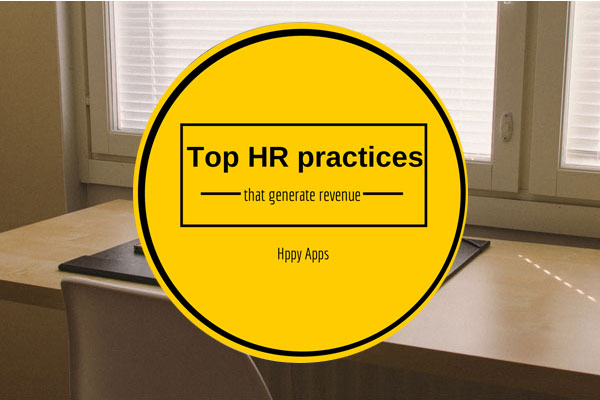HR is not about making money. But the prime goal of any business is to generate profit. So how can HR managers coordinate their KPIs to align to business objectives and increase profits?
Here are the top HR practices that can help you with that:
Employee Engagement
Employee engagement is not just an HR goal, it’s an organizational one. That’s why it’s probably the best example for this particular discussion.
Companies with high engagement rates have an increased revenue growth, increased shareholder value and display strong company cultures. These companies outperform their counterparts by 6% in revenues, 4% in operating margin and 6% in shareholder return. (Source: Aon)
Here’s how you can integrate employee engagement in your HR strategy.
► Key KPIs you should follow:
Retention
Absenteeism
Wellness
Operational
Safety
Customer
Satisfaction
NPS
Financial
Revenue/sales growth
Op. income/margin
Total shareholder return
Focus on management
Managers hold the key to employee engagement. They are directly involved in every employee engagement area. They themselves have to be engaged so that they have a multiplying effect on the company’s general engagement.
Enlist and empower managers in talent management, don’t just leave it to HR. Include them in your HR strategy, monitor their involvement in engaging employees and make sure that they have the desired impact engagement objectives that directly impact your company’s business outcomes.
► Key KPIs you should follow:
Performance management
People management
Empowerment/autonomy
Work tasks
Internal brand alignment
Your brand has two dimensions: internal and external. You want these two dimensions to balance themselves. In other words, the desired status is an internal brand alignment.
According to Aon, employees’ perceptions of internal brand alignment have decreased 4 percentage points in the last two years. So what does that mean?
It means that your employees don’t feel like your external image reflects your real values. That can have a very negative impact on your overall branding efforts. It’s the era of the Digital Society. There is no hiding your internal branding mistrust from your external stakeholders.
Being responsible for promoting and advancing your company values, mission and culture, your HR manager will integrate this objective in key processes such as recruitment, compensation and training & development, to ensure an internal brand alignment.
Here’s how that links back to your revenues:
“Branding provides a way out of commoditization and its consequent profit erosion because supply and demand dictates products in higher demand can charge a higher price. (…) Brand value is one of the main reasons why the market capitalization of a company often exceeds its book value in mergers, acquisitions, licensing, joint ventures and other financing negotiations.(…)
Strong brands demonstrate greater return on equity. Profitability ratios, such as gross profit margin, operating profit margin, net profit margin and return on equity all indicate higher overall performance and greater efficiency in managing assets and liabilities.”
Read more: Branding by the numbers – measuring brand value, equity and marketing activity | Martin Roll
► Key KPIs you should follow:
Reputation
Corporate responsibility
Stimulating organizational innovation
HR managers are given the challenging task of having to balance performance and innovation through talent management.
In our last article we talked about stimulating innovation through training and development and how you can create a successful program.
Another important HR practice is to push for organizational innovation, using internal ideas and suggestions; listening to employees, getting feedback and committing to the improvement ideas that arise.
► Key KPIs you should follow:
Learning and development
Internal processes
Feedback
Knowledge management
Wrap-up
Your talent is your most important resource. Managing correctly reflects in your business outcomes. That’s why your HR strategy should be aligned to your business objectives and thoroughly tracked and measured.
Connect your employee engagement, management, internal branding and organizational innovation efforts with your business outcomes to see how HR impacts your financial objectives.
Image via Unsplash under C.C.0 license (modified)






Leave A Comment